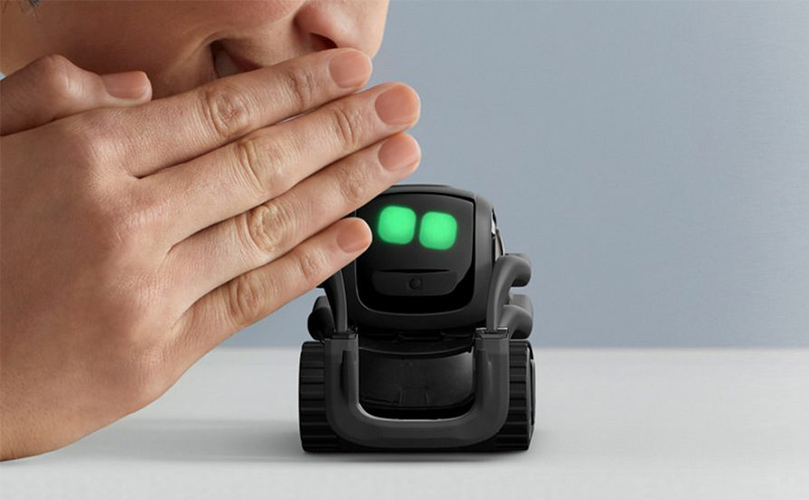
If you are a teacher and want to make your classroom more efficient, consider the use of educational chatbots. These chatbots automate administrative tasks and reach more people than human administrators. They can respond to repetitive queries, send notifications and reminders, and collect personal information on students. Chatbots, unlike administrators, can collect student information from students and send notifications for them. They are also faster than humans and can handle more complicated tasks, such as collecting student information.
Learning assistants
The education industry is changing with the use of artificially intelligent chatbots. Instead of having students fill out separate forms for each class and then wait for their responses, teachers can immediately send messages to the chatbot. The chatbot can not only respond to questions but can also analyze student learning styles and tailor its responses. Students can have a conversation with the chatbot and the software will adapt to their needs.
RQ2 has published a new study that examines the use of chatbots to educate and identifies its benefits. The research examined the potential benefits of educational chatbots. It identified four main questions that could be used to explore their future potential and usefulness. It was found that educational chatbots can enhance the learning experience by providing instant support, integrating materials, and encouraging personalised learning. Teachers can also share the same information with multiple chatbot users, making it easier to assess this technology's effectiveness.

AI-enhanced technology
A major advantage of using chatbots for educational purposes is that they can solve a wide range of problems that students face. Chatbots are able to assist students in many different situations, as well as solving login and registration problems. Chatbots can also help students make friends. Millennials are notoriously impatient and expect instant answers to their questions. Chatbots that are AI-enhanced may be able to meet this need, providing 24/7 student support.
Chatbots in education can be used to assist students and reduce the cost of human tutors. By answering questions and directing students to the appropriate pages, education chatbots can improve learning environments and increase enrollment. Often, students are concerned with making the wrong career choice, choosing between multiple schools. AI-enhanced programs can help students simplify the process by answering frequently asked questions, providing information about campus, its facilities, scholarship possibilities, and enrolling.
Conversational agents
Conversational Agents are a positive tool for educators. Students also report improved learning and support from their teachers. This is due in part to the enhanced interaction and feedback students receive from the chatbot. Chatbots are even more beneficial. Students identify chatbots as an invaluable learning partner. There are many benefits beyond the technology's educational benefit. Let's examine how they might use this technology to enhance student learning.
The study's methodology examines articles published in six reputable digital databases. It excludes book chapters and other publications. It also reduces the study's focus to articles about Chatbots and tertiary education. Keywords that relate to other types or education may be able to overcome this limitation. Chatbots are also likely to have positive effects on education. More research is needed.

Tutor support
Tutor support for educational chatbots can improve students' learning experience and reduce the need for human teachers. Chatbots can also be programmed to send reminders or notifications and can even be trained to provide personalized tutoring. Teachers can streamline student-teacher communication by using chatbots that tutor. Teachers can save their time and increase the bot’s capabilities by asking common questions. In addition to teachers' input, chatbots can also include third-party educational programs, which can teach students on their own and align with their subject matter.
Teachers already have a lot of work to do, which is why they are often working long hours. Chatbots can automate tasks such as scoring tests, sending assignments, tracking student attendance, and sending notes and recordings. Chatbots are able to make recommendations based a teacher's schedule and preferences. These features make tutor support chatbots very easy to use. This will be a great resource for both students, and teachers.
FAQ
How does AI work
An algorithm is a set of instructions that tells a computer how to solve a problem. An algorithm can be expressed as a series of steps. Each step is assigned a condition which determines when it should be executed. The computer executes each instruction in sequence until all conditions are satisfied. This is repeated until the final result can be achieved.
Let's suppose, for example that you want to find the square roots of 5. It is possible to write down every number between 1-10, calculate the square root for each and then take the average. It's not practical. Instead, write the following formula.
sqrt(x) x^0.5
You will need to square the input and divide it by 2 before multiplying by 0.5.
This is how a computer works. It takes your input, squares it, divides by 2, multiplies by 0.5, adds 1, subtracts 1, and finally outputs the answer.
What is the current state of the AI sector?
The AI industry is growing at an unprecedented rate. There will be 50 billion internet-connected devices by 2020, it is estimated. This will enable us to all access AI technology through our smartphones, tablets and laptops.
This shift will require businesses to be adaptable in order to remain competitive. Businesses that fail to adapt will lose customers to those who do.
Now, the question is: What business model would your use to profit from these opportunities? You could create a platform that allows users to upload their data and then connect it with others. You might also offer services such as voice recognition or image recognition.
No matter what your decision, it is important to consider how you might position yourself in relation to your competitors. It's not possible to always win but you can win if the cards are right and you continue innovating.
AI is it good?
AI is seen in both a positive and a negative light. AI allows us do more things in a shorter time than ever before. Programming programs that can perform word processing and spreadsheets is now much easier than ever. Instead, we ask our computers for these functions.
People fear that AI may replace humans. Many believe robots will one day surpass their creators in intelligence. They may even take over jobs.
Who created AI?
Alan Turing
Turing was born 1912. His father was clergyman and his mom was a nurse. At school, he excelled at mathematics but became depressed after being rejected by Cambridge University. He discovered chess and won several tournaments. After World War II, he worked in Britain's top-secret code-breaking center Bletchley Park where he cracked German codes.
He died in 1954.
John McCarthy
McCarthy was born 1928. He was a Princeton University mathematician before joining MIT. There he developed the LISP programming language. By 1957 he had created the foundations of modern AI.
He died in 2011.
Is AI possible with any other technology?
Yes, but still not. Many technologies have been developed to solve specific problems. But none of them are as fast or accurate as AI.
Statistics
- Additionally, keeping in mind the current crisis, the AI is designed in a manner where it reduces the carbon footprint by 20-40%. (analyticsinsight.net)
- While all of it is still what seems like a far way off, the future of this technology presents a Catch-22, able to solve the world's problems and likely to power all the A.I. systems on earth, but also incredibly dangerous in the wrong hands. (forbes.com)
- That's as many of us that have been in that AI space would say, it's about 70 or 80 percent of the work. (finra.org)
- A 2021 Pew Research survey revealed that 37 percent of respondents who are more concerned than excited about AI had concerns including job loss, privacy, and AI's potential to “surpass human skills.” (builtin.com)
- In 2019, AI adoption among large companies increased by 47% compared to 2018, according to the latest Artificial IntelligenceIndex report. (marsner.com)
External Links
How To
How to get Alexa to talk while charging
Alexa, Amazon's virtual assistant can answer questions and provide information. It can also play music, control smart home devices, and even control them. It can even hear you as you sleep, all without you having to pick up your smartphone!
Alexa allows you to ask any question. Simply say "Alexa", followed with a question. She'll respond in real-time with spoken responses that are easy to understand. Alexa will improve and learn over time. You can ask Alexa questions and receive new answers everytime.
Other connected devices can be controlled as well, including lights, thermostats and locks.
Alexa can be asked to dim the lights, change the temperature, turn on the music, and even play your favorite song.
Alexa to Call While Charging
-
Open Alexa App. Tap Settings.
-
Tap Advanced settings.
-
Select Speech Recognition
-
Select Yes, always listen.
-
Select Yes to only wake word
-
Select Yes, and use a microphone.
-
Select No, do not use a mic.
-
Step 2. Set Up Your Voice Profile.
-
Enter a name for your voice account and write a description.
-
Step 3. Step 3.
Followed by a command, say "Alexa".
You can use this example to show your appreciation: "Alexa! Good morning!"
Alexa will answer your query if she understands it. For example, "Good morning John Smith."
Alexa will not reply if she doesn’t understand your request.
-
Step 4. Restart Alexa if Needed.
Make these changes and restart your device if necessary.
Notice: If the speech recognition language is changed, the device may need to be restarted again.